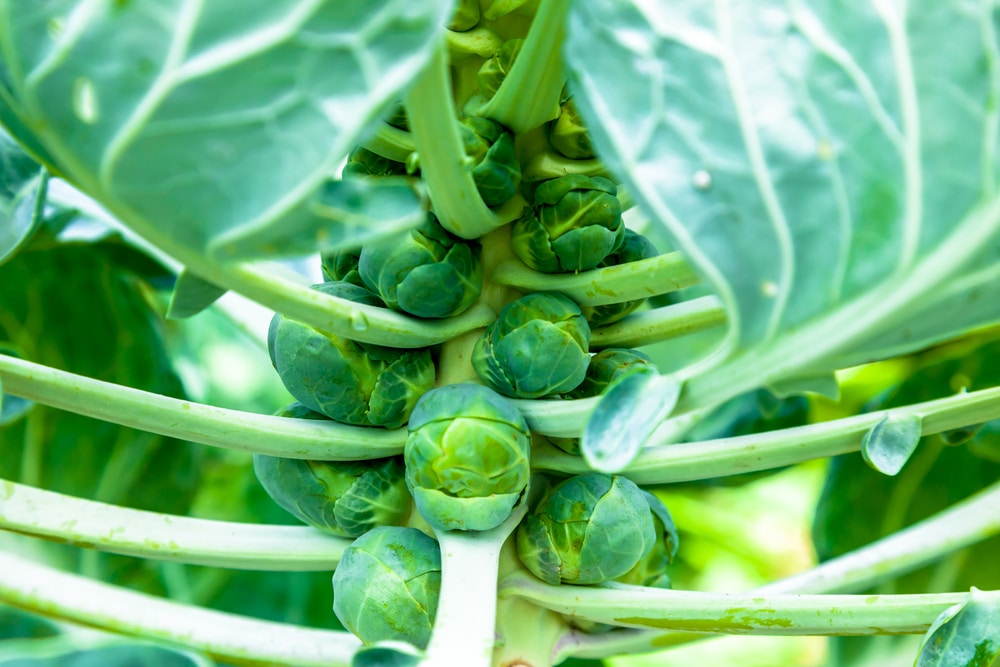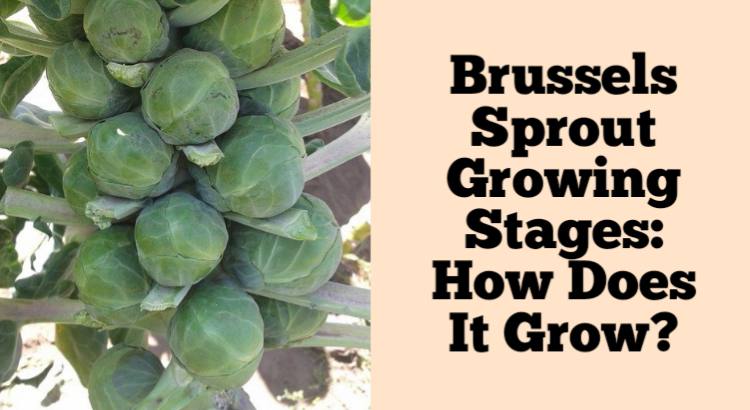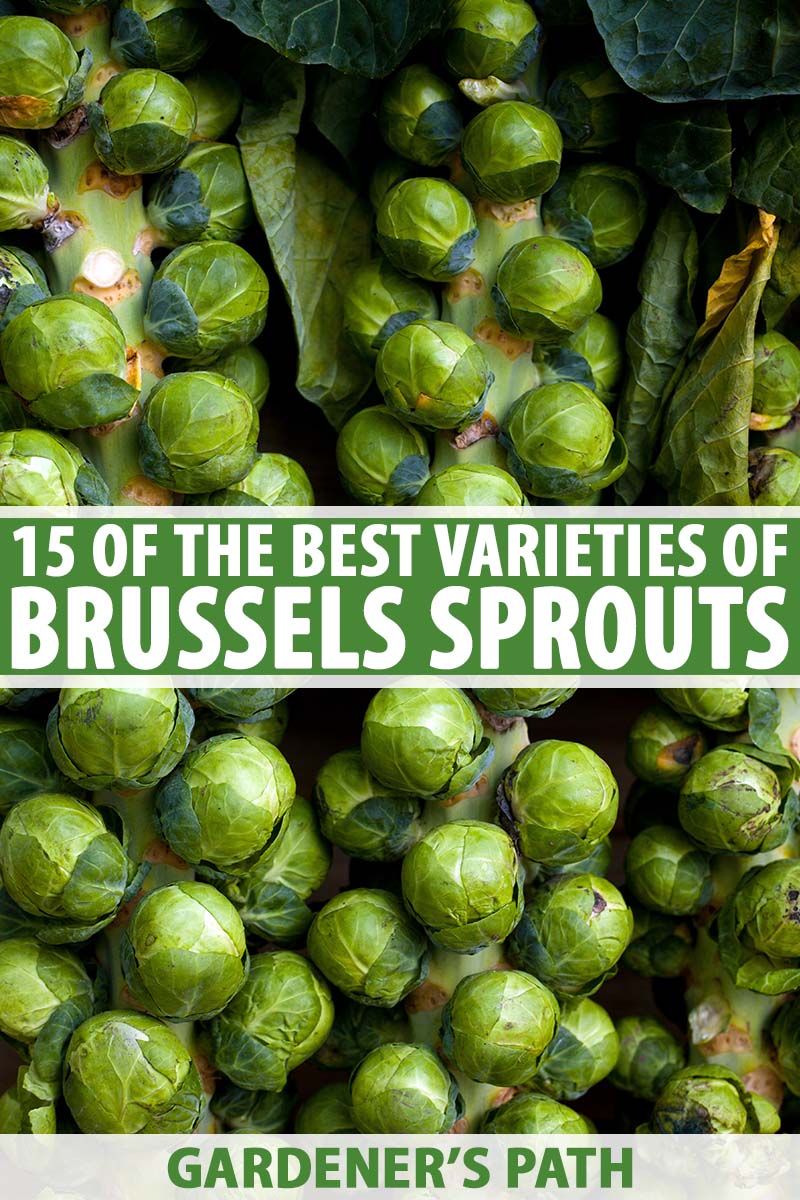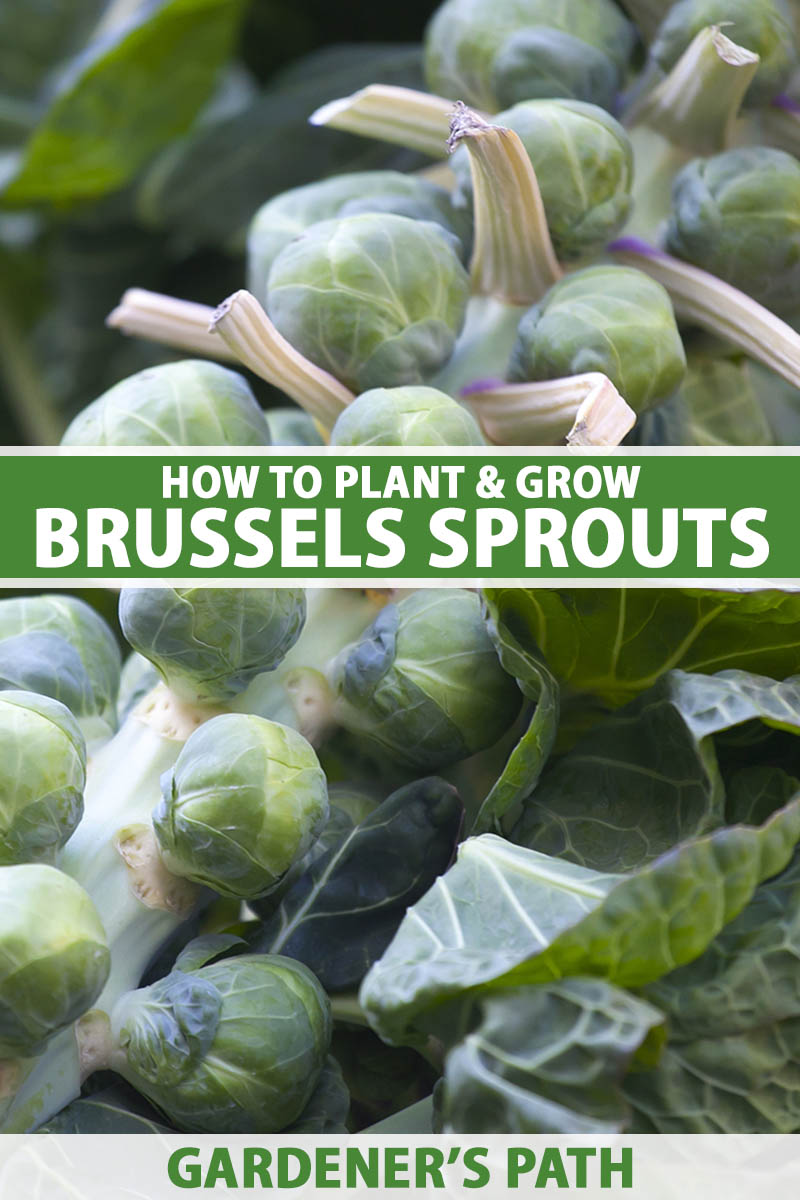Understanding the Ideal Climate for Brussels Sprouts
Brussels sprouts are a cool-season crop that thrives in temperate climates with moderate temperatures and adequate moisture. To determine when to plant Brussels sprouts, it’s essential to understand the ideal climate conditions for optimal growth. Temperature plays a crucial role in the development of Brussels sprouts, with the ideal temperature range for growth between 60°F (15°C) and 75°F (24°C). Prolonged exposure to temperatures above 85°F (29°C) can lead to bolting, where the plant prematurely produces seeds, while temperatures below 50°F (10°C) can cause the plant to become dormant.
Moisture is also a critical factor in growing Brussels sprouts. The plant requires consistent and adequate moisture, especially during the germination and seedling stages. However, excessive moisture can lead to root rot and other diseases. Brussels sprouts also require full sun to partial shade, with at least 6 hours of direct sunlight per day.
When considering when to plant Brussels sprouts, it’s essential to take into account the specific climate and weather patterns in your region. In areas with mild winters, Brussels sprouts can be planted in early spring or late summer for a fall harvest. In regions with harsh winters, it’s best to plant Brussels sprouts in early spring, as soon as the soil can be worked, or in late summer for a fall harvest.
By understanding the ideal climate conditions for Brussels sprouts, you can determine the optimal time to plant and ensure a healthy and productive crop. Whether you’re a seasoned gardener or a beginner, knowing when to plant Brussels sprouts is crucial for success.
How to Determine the Best Planting Time for Your Region
Determining the best planting time for Brussels sprouts requires consideration of your location, climate, and weather patterns. One way to determine the optimal planting time is to use frost dates, which indicate the average date of the last frost in spring and the first frost in fall. In areas with mild winters, Brussels sprouts can be planted in early spring, about 4-6 weeks before the last frost date. In regions with harsh winters, it’s best to plant Brussels sprouts in late summer or early fall, about 8-10 weeks before the first frost date.
Another way to determine the best planting time is to use temperature averages. Brussels sprouts thrive in temperatures between 60°F (15°C) and 75°F (24°C). Check the average temperature for your area and plant Brussels sprouts when the temperature is within this range. You can also use a soil thermometer to check the soil temperature, which should be around 40°F (4°C) to 50°F (10°C) for optimal germination.
When deciding when to plant Brussels sprouts, it’s also essential to consider the specific weather patterns in your region. Avoid planting during periods of extreme weather, such as heavy rainfall or intense heat. Instead, plant Brussels sprouts during periods of mild weather, when the soil is moist but not waterlogged.
By considering these factors, you can determine the best planting time for Brussels sprouts in your region. Remember to check the specific weather forecast for your area and adjust your planting schedule accordingly. With proper planning, you can ensure a healthy and productive crop of Brussels sprouts.
For example, if you live in an area with a moderate climate, you can plant Brussels sprouts in early spring, around late March or early April. In areas with a cooler climate, you may need to wait until late April or early May to plant. In regions with a warmer climate, you can plant Brussels sprouts in late summer or early fall, around late August or early September.
The Benefits of Planting Brussels Sprouts at the Right Time
Planting Brussels sprouts at the right time can have a significant impact on the success of your crop. When planted during the ideal season, Brussels sprouts can benefit from improved germination rates, healthier plants, and increased yields. In fact, studies have shown that Brussels sprouts planted during the optimal time can produce up to 20% more buds than those planted too early or too late.
One of the main benefits of planting Brussels sprouts at the right time is improved germination rates. When the soil is too cold or too hot, germination can be slow or even non-existent. By planting during the ideal season, you can ensure that your seeds germinate quickly and evenly, giving your plants a strong start.
Another benefit of planting Brussels sprouts at the right time is healthier plants. When plants are exposed to extreme temperatures or weather conditions, they can become stressed, leading to disease and pest problems. By planting during the optimal time, you can reduce the risk of these problems and promote healthy growth.
In addition to improved germination rates and healthier plants, planting Brussels sprouts at the right time can also lead to increased yields. When plants are grown during the ideal season, they can produce more buds and larger, more flavorful sprouts. This can result in a more bountiful harvest and a greater return on your investment.
So, when to plant Brussels sprouts for optimal results? The answer depends on your location and climate. In general, it’s best to plant Brussels sprouts in early spring or late summer, when the weather is mild and the soil is cool. By planting at the right time, you can give your Brussels sprouts the best chance of success and enjoy a bountiful harvest.
By understanding the benefits of planting Brussels sprouts at the right time, you can make informed decisions about when to plant and how to care for your crop. With the right timing and care, you can enjoy a successful harvest of delicious and nutritious Brussels sprouts.
Avoiding Common Mistakes: When Not to Plant Brussels Sprouts
While timing is crucial when it comes to planting Brussels sprouts, there are also certain times when it’s best to avoid planting altogether. Planting too early or too late can lead to poor germination rates, weak plants, and reduced yields. In this section, we’ll discuss some common mistakes to avoid when planting Brussels sprouts.
One of the most common mistakes is planting Brussels sprouts too early in the spring. While it may be tempting to get a head start on the growing season, planting too early can lead to poor germination rates and weak seedlings. This is because the soil is often too cold and wet in early spring, making it difficult for seeds to germinate and grow.
Another mistake is planting Brussels sprouts too late in the fall. While Brussels sprouts can tolerate light frosts, they are not suitable for areas with harsh winters. Planting too late in the fall can lead to poor growth and reduced yields, as the plants may not have enough time to mature before the first frost.
It’s also important to avoid planting Brussels sprouts during periods of extreme weather. For example, planting during a heatwave or drought can lead to poor germination rates and weak plants. Similarly, planting during a period of heavy rainfall or flooding can lead to root rot and other diseases.
So, when to plant Brussels sprouts to avoid these common mistakes? The answer depends on your location and climate. In general, it’s best to plant Brussels sprouts in early spring or late summer, when the weather is mild and the soil is cool. By avoiding these common mistakes, you can give your Brussels sprouts the best chance of success and enjoy a bountiful harvest.
Additionally, it’s also important to consider the specific weather patterns in your area. For example, if you live in an area with a short growing season, you may need to plant Brussels sprouts earlier in the spring to give them enough time to mature. On the other hand, if you live in an area with a long growing season, you may be able to plant Brussels sprouts later in the summer.
Preparing the Soil for Optimal Brussels Sprouts Growth
Before planting Brussels sprouts, it’s essential to prepare the soil to ensure optimal growth and productivity. The ideal soil for Brussels sprouts is well-draining, rich in organic matter, and has a pH between 6.0 and 7.0. Here are some tips on how to prepare the soil for planting Brussels sprouts:
First, test the soil pH to determine if it’s within the optimal range for Brussels sprouts. If the soil pH is too low or too high, adjust it accordingly by adding lime or sulfur. Next, add organic matter such as compost or well-rotted manure to improve the soil’s structure and fertility.
Brussels sprouts are heavy feeders and require a balanced diet of nutrients to grow well. Add a balanced fertilizer that contains nitrogen, phosphorus, and potassium (NPK) to the soil before planting. You can also add additional nutrients such as calcium and magnesium to promote healthy growth.
Another important aspect of soil preparation is to ensure good drainage. Brussels sprouts don’t like wet feet, so make sure the soil drains well to prevent waterlogged soil. You can improve drainage by adding organic matter or perlite to the soil.
Finally, consider using crop rotation to improve soil fertility and structure. Brussels sprouts are a cool-season crop, so they do well when planted after a warm-season crop such as tomatoes or peppers. This helps to break disease and pest cycles and improves soil fertility.
By preparing the soil properly, you can give your Brussels sprouts the best chance of success and enjoy a bountiful harvest. Remember to test the soil pH and nutrient levels regularly to ensure optimal growth and productivity.
When to plant Brussels sprouts also depends on the soil temperature. Brussels sprouts prefer a cool soil temperature, typically between 40°F and 70°F (4°C and 21°C). Avoid planting in soil that is too hot or too cold, as this can affect germination and growth.
Choosing the Right Variety of Brussels Sprouts for Your Climate
With so many varieties of Brussels sprouts available, choosing the right one for your climate and region can be a daunting task. However, by understanding the different characteristics of each variety, you can make an informed decision and ensure a successful harvest.
One of the most important factors to consider when choosing a variety of Brussels sprouts is the climate. Some varieties are better suited to cooler climates, while others prefer warmer temperatures. For example, the ‘Long Island Improved’ variety is a popular choice for cooler climates, as it is resistant to frost and can tolerate light snow.
Another factor to consider is the maturity date of the variety. Some varieties of Brussels sprouts mature quickly, while others take longer. If you live in an area with a short growing season, you may want to choose a variety that matures quickly, such as the ‘Jade Cross’ variety. On the other hand, if you live in an area with a longer growing season, you may want to choose a variety that takes longer to mature, such as the ‘Red Ball’ variety.
In addition to climate and maturity date, you should also consider the flavor and texture of the variety. Some varieties of Brussels sprouts have a sweeter, milder flavor, while others have a stronger, more bitter flavor. For example, the ‘Falstaff’ variety has a sweet, nutty flavor, while the ‘Rubine’ variety has a stronger, more bitter flavor.
When to plant Brussels sprouts also depends on the specific variety you choose. Some varieties are better suited to early spring planting, while others prefer late summer or early fall planting. Be sure to check the specific planting instructions for the variety you choose to ensure optimal growth and productivity.
By choosing the right variety of Brussels sprouts for your climate and region, you can ensure a successful harvest and enjoy a delicious, nutritious crop. Whether you’re a seasoned gardener or a beginner, there’s a variety of Brussels sprouts out there for you.
Planting Brussels Sprouts: A Step-by-Step Guide
Planting Brussels sprouts can be a straightforward process if you follow the right steps. Here’s a step-by-step guide to help you get started:
Step 1: Prepare the Soil – Before planting, make sure the soil is well-draining and has a pH between 6.0 and 7.0. Add organic matter such as compost or well-rotted manure to improve the soil’s structure and fertility.
Step 2: Choose the Right Variety – Select a variety of Brussels sprouts that is suitable for your climate and region. Consider factors such as maturity date, flavor, and texture when making your selection.
Step 3: Sow the Seeds – Sow the seeds 1-2 inches deep and 2-3 inches apart in rows that are 3 feet apart. Water the soil gently but thoroughly after sowing.
Step 4: Thin the Seedlings – Once the seedlings have 2-3 sets of leaves, thin them out to 12-18 inches apart. This will give the remaining seedlings room to grow and receive adequate sunlight.
Step 5: Water and Mulch – Keep the soil consistently moist during the first few weeks after planting. Mulch around the plants to retain moisture and suppress weeds.
Step 6: Fertilize – Feed the plants with a balanced fertilizer once a month. You can also side-dress with a high-nitrogen fertilizer to promote healthy growth.
Step 7: Monitor for Pests and Diseases – Keep an eye out for common pests and diseases such as aphids, whiteflies, and powdery mildew. Use organic or chemical controls as needed to prevent infestations.
By following these steps, you can ensure a successful harvest of delicious and nutritious Brussels sprouts. Remember to plant at the right time for your region and climate, and don’t hesitate to seek advice if you encounter any problems along the way.
Troubleshooting Common Issues with Brussels Sprouts
Despite proper care and attention, Brussels sprouts can still be susceptible to various problems. Here are some common issues that may arise and how to troubleshoot them:
Pests: Aphids, whiteflies, and cabbage loopers are common pests that can infest Brussels sprouts. To control these pests, use organic or chemical controls such as neem oil, insecticidal soap, or pyrethrin sprays.
Diseases: Brussels sprouts are prone to diseases such as powdery mildew, downy mildew, and club root. To prevent these diseases, ensure good air circulation, water carefully, and avoid over-fertilizing. If diseases do occur, use fungicides or bactericides as needed.
Nutrient deficiencies: Brussels sprouts require adequate nutrients to grow well. If the plants are not receiving enough nutrients, they may exhibit symptoms such as yellowing leaves or stunted growth. To address nutrient deficiencies, fertilize the plants regularly and ensure the soil pH is within the optimal range.
Weather damage: Brussels sprouts can be damaged by extreme weather conditions such as frost, heat, or wind. To protect the plants from weather damage, use row covers or other forms of protection as needed.
By being aware of these common issues and taking steps to prevent or address them, you can help ensure a healthy and productive crop of Brussels sprouts. Remember to monitor your plants regularly and take action promptly if you notice any problems.
When to plant Brussels sprouts can also impact the likelihood of these problems occurring. By planting at the right time for your region and climate, you can reduce the risk of pests, diseases, and nutrient deficiencies.


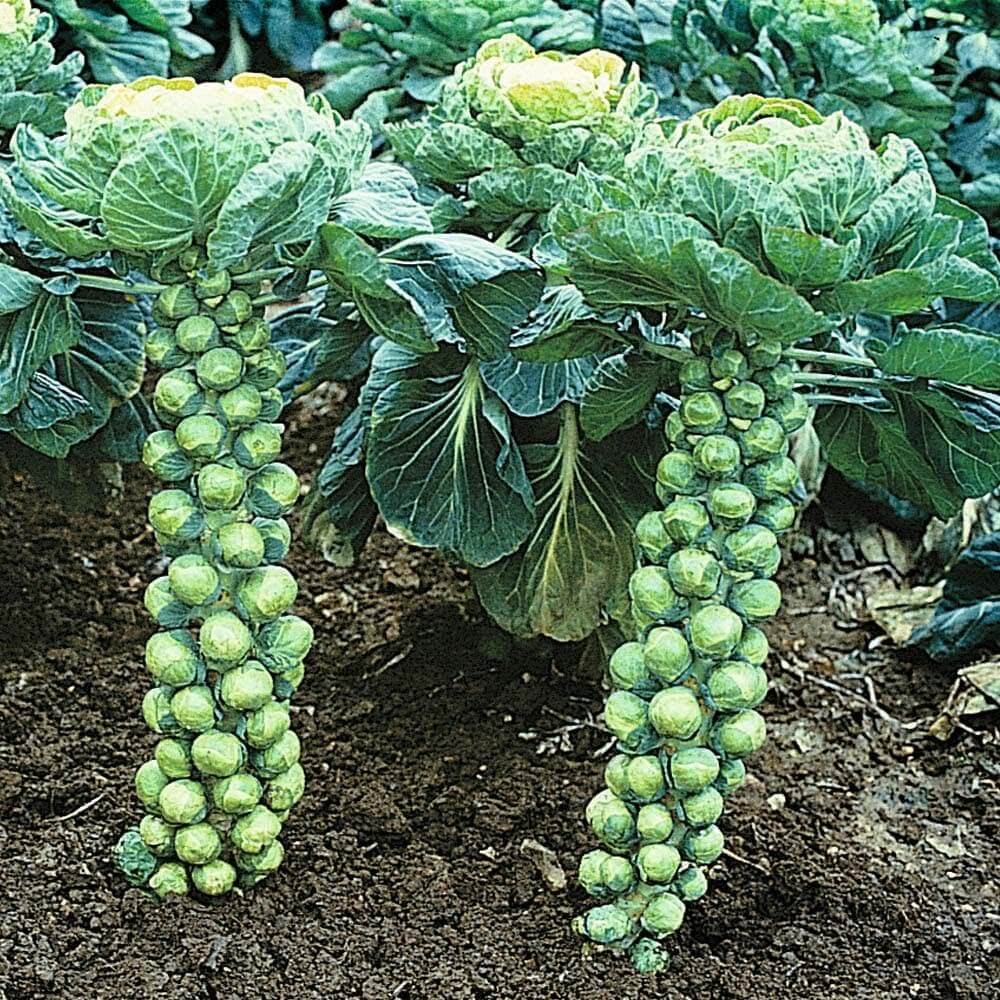

:max_bytes(150000):strip_icc()/growing-brussels-sprouts-1403442-01-d26251aed3154f2b8dab76d289f509d4.jpg)
